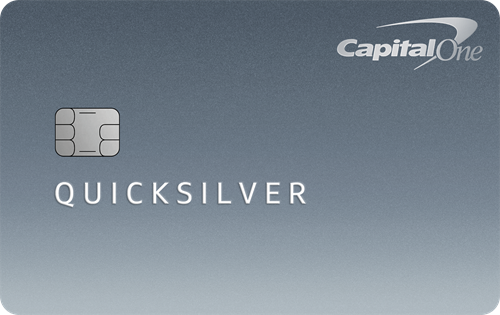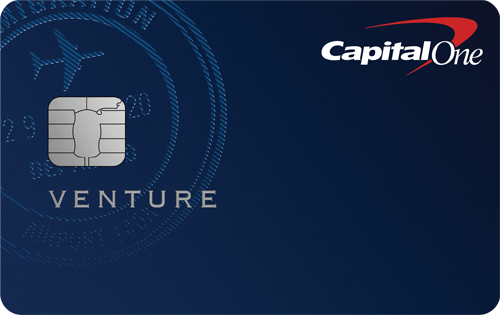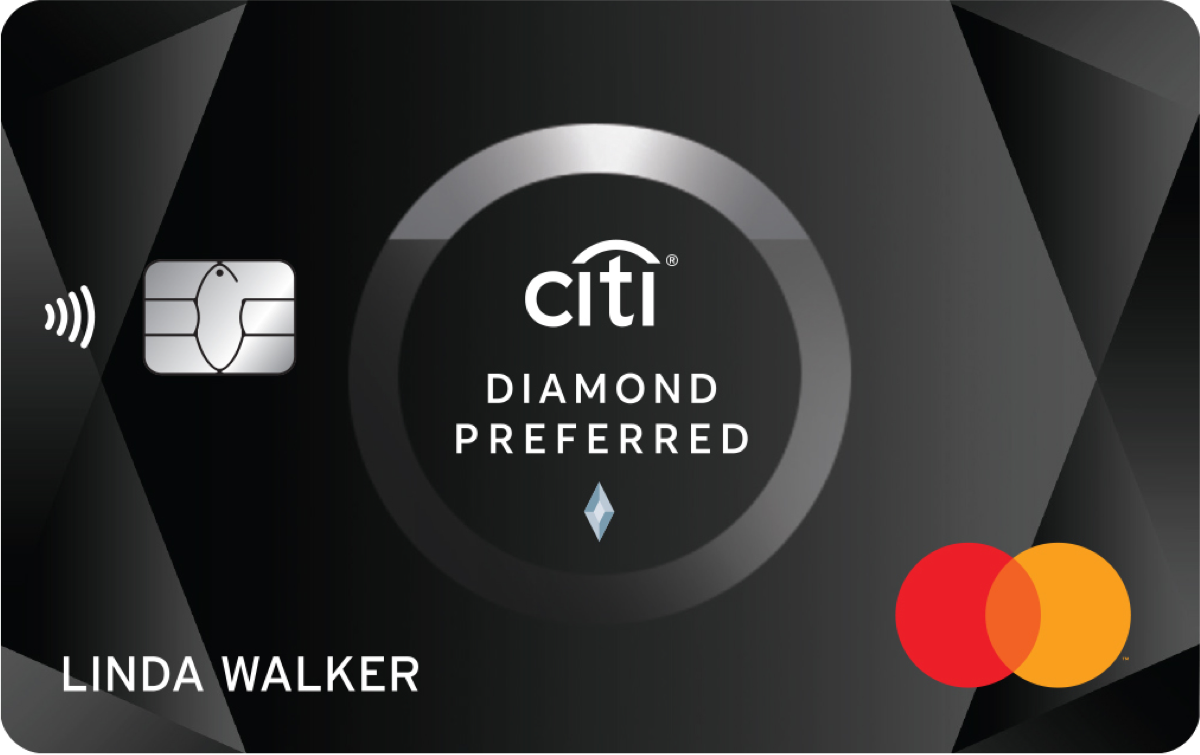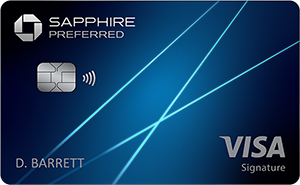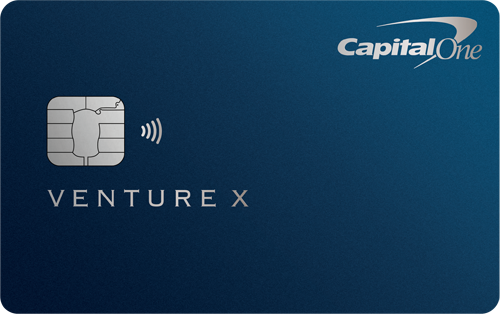Capital One Venture vs. Quicksilver: A Face-Off Between Travel and Cash Back Rewards

The Capital One Quicksilver Cash Rewards Credit Card and the Capital One Venture Rewards Credit Card both hold a special place in my heart. The Quicksilver was my first (adult) cash-back credit card, upgraded from my very first student credit card. The Venture was my first travel credit card and introduced me to the points and miles game, which has taken me to half a dozen countries on rewards. But which is the better choice for you?
The Quicksilver versus Venture decision comes down to how you prefer to earn rewards and if you are willing to pay an annual fee. Where the Quicksilver Card offers flexible cash-back earnings and no annual fee, the Venture Card offers travel rewards that can be more valuable with a bit of work to redeem them, plus a $95 annual fee. Here’s what you need to know to choose the best for your spending habits.

400+ Credit Cards
Analyzed independently across 50+ data points in 30+ product categories

Reviewed
By a team of credit card experts with an average of 9+ years of experience

Trusted by
More than one million monthly readers seeking unbiased credit card guidance
CardCritics™ editorial team is dedicated to providing unbiased credit card reviews, advice and comprehensive comparisons. Our team of credit card experts uses rigorous data-driven methodologies to evaluate every card feature, fee structure and rewards program. In most instances, our experts are longtime members or holders of the very programs and cards they review, so they have firsthand experience maximizing them. We maintain complete editorial independence — our ratings and recommendations are never influenced by advertiser relationships or affiliate partnerships. You can learn more about our editorial standards, transparent review process and how we make money to understand how we help you make informed financial decisions.
How the Cards Compare: Capital One Quicksilver Rewards vs. Venture Rewards
Side By Side Comparison
Annual Fee
Purchase and Balance Transfer APR
Welcome Bonus
Ongoing Rewards
Earn unlimited 5% cash back on hotels, vacation rentals and rental cars booked through Capital One Travel
Earn unlimited 2X miles on every purchase, every day.
Pros & Cons
- Easy to earn bonus with low spend requirement
- No foreign transaction fee
PROS
- Elevated 5% cash back rate only applies to hotels, vacation rentals and rental cars booked through Capital One Travel
- Other flat-rate cards offer a higher cash back rate
CONS
- No foreign transaction fee
- Double miles earned on every purchase
- Travel perks like Global Entry or TSA PreCheck® Credit
PROS
- No introductory APR offer
- Limited hotel transfer partners
CONS
Learn More
Welcome Bonuses
The Capital One Venture Card is currently offering a much higher welcome bonus than the Quicksilver Card. But the Venture bonus comes in the form of miles, so you’ll have to redeem them toward travel to get the best value. Here’s how they stack up:
Capital One Quicksilver Welcome Bonus
The Capital One Quicksilver Card offers new cardholders a substantial welcome bonus: For a limited time, earn $300 in welcome bonuses. Enjoy a $100 credit to use towards flights, stays and rental cars booked through Capital One Travel during your first cardholder year. Plus, earn a $200 cash bonus once you spend $500 on purchases within the first 3 months from account opening.
While this is not the biggest welcome bonus you can find on a credit card, it is a nice chunk of change, and the spending requirement to earn it is relatively modest.
Capital One Venture Welcome Bonus
The Capital One Venture Card is currently offering new cardholders 75,000 bonus miles after spending $4,000 in the first three months of account opening. The spend threshold to earn the bonus is much higher than with the Quicksilver Card, but so is the potential value. Those 75,000 miles are worth $750 toward travel — whether you redeem in the Capital One Travel portal or on an external travel booking site.
CardCritics™ Opinion
When looking at value alone, the Capital One Venture Card offers a much better welcome bonus offer. The 75,000 bonus miles can be worth $750 toward travel purchases or even more if you take advantage of Capital One’s transfer partners. Still, infrequent travelers may prefer the flexibility of the cash back bonus from the Quicksilver Card.
Earning Rewards
Though they earn different types of rewards, the Capital One Quicksilver Card and Capital One Venture Card offer similar earning schemes. Both offer enhanced flat rates on everyday spending, where most credit cards only earn 1% cash back or 1 point per dollar. But the Venture Card offers a higher earning rate, in exchange for its $95 annual fee.
How To Earn Rewards With Capital One Quicksilver
The Capital One Quicksilver Card has a straightforward earning scheme: Cardholders earn 1.5% cash back on every purchase they make, except hotels, vacation rentals and rental cars booked through Capital One Travel, which earn 5% back. That means you don’t have to keep track of multiple bonus categories or be strategic with your spending to earn rewards on this card.
It’s worth noting, though, that while the Quicksilver Card offers a decent cash-back rate for a no-annual-fee credit card, it is not the highest rate you can find. Alternatives, including the Wells Fargo Active Cash® Card and Citi Double Cash® Card, an advertising partner, offer 2% cash rewards on all purchases.
How To Earn Rewards With Capital One Venture
Like the Quicksilver, the Capital One Venture Card offers a high flat rate of earning on general purchases. It offers 2x Capital One miles on every purchase you make. Plus, cardholders can earn 5x miles on hotels, vacation rentals and rental cars booked through Capital One Travel.
CardCritics™ Opinion
The Capital One Venture Card is the clear winner on rewards earning — with one important caveat. In exchange for a higher flat rate on general purchases and bonus earnings on select Capital One Travel spending, cardholders will be subject to a $95 annual fee. This can be offset by earnings and other benefits for many cardholders, but you’ll need to make sure the math makes sense for your spending.
Redeeming Rewards
Redeeming rewards is where the Quicksilver and Venture cards differ the most. Where the Quicksilver Card offers cash back, the Venture Card offers travel miles. That means you’ll spend your rewards differently to get the most out of either of these cards, and one currency may be a better fit.
How To Redeem Rewards With Capital One Quicksilver
The Capital One Quicksilver Card offers cash back earnings that you can redeem in a variety of ways. You can opt to redeem for a statement credit or to cover specific purchases made on your card, or to have Capital One send you a check for any amount. Alternatively, you can redeem cash back for gift cards or use rewards to shop online at Amazon or via PayPal checkout.
With the exception of gift cards — with which value can vary — all of these redemption options offer the same value for your rewards. You won’t have to search for valuable travel redemptions or spend your cash back a certain way to maximize it.
How To Redeem Rewards With Capital One Venture
The Capital One Venture Card has a few more options for redeeming your miles, but your value can vary. You can redeem miles for the following:
- Capital One Travel purchases: You can use your miles in the Capital One Travel portal to book flights, hotels, vacation rentals, rental cars and more. Miles redeemed this way are worth 1 cent each.
- Other travel purchases: If you prefer to book your travel through another site, you can still redeem your Capital One miles for those purchases. Just put travel spending on your Venture Card. Then, you can select the qualifying travel purchase you want to cover and redeem at 1 cent per mile to offset the cost within 90 days of the charge.
- Transfer partners: Capital One has a list of travel partners that Venture cardholders can opt to transfer miles to. Most of these partners offer a 1:1 transfer ratio, with a few exceptions. But since some partner points and miles are worth more than 1 cent a piece, you can often get even more value from your Capital One miles by redeeming this way.
- Cash back: While you can redeem your Venture miles for cash back, the redemption value is poor. You’ll get just 0.5 cents per mile.
- Online shopping: Like the Quicksilver Card, the Venture Card allows you to spend your rewards on online shopping with select retailers. But spending your miles on Amazon purchases, for instance, only nets a value of 0.8 cents per mile.
- Gift cards: The value you get for redeeming Venture miles for a gift card will vary.
CardCritics™ Opinion
The better card for rewards redemption will depend on your lifestyle. If you travel even a few times a year, the miles earned on the Venture Card can save you a lot of money and unlock exciting experiences. I used miles earned on my Venture Card to fund a trip to Iceland entirely on rewards — crossing a country off my bucket list with hardly any money out of pocket.
Meanwhile, the Quicksilver Card’s cash back is much more flexible. For instance, I use cash back earned on my Quicksilver to offset all kinds of everyday purchases, from my cats’ food order from Chewy to my old renter’s insurance monthly payment. Infrequent travelers may prefer this kind of flexible rewards currency to travel miles, which require a bit more effort to maximize.
Card Benefits
In terms of benefits, the Venture Card has a bit more to offer than the Quicksilver Card, including credits that help justify the annual fee.
Capital One Quicksilver Benefits
Like many other no-annual-fee credit cards, the Capital One Quicksilver Card’s benefits are relatively bare bones. Notable featured perks include:
- Hertz Five Star status*: Quicksilver cardholders can enroll and receive complimentary Five Star elite status with Hertz, which unlocks benefits like upgrades and wider rental selections.
- Capital One Entertainment access: Capital One cardholders get access to Capital One Entertainment, which often includes exclusive or pre-sale ticket access to concerts and other events.
- Virtual card numbers: If you want to protect your card details when shopping online, you can access a virtual card number in your Quicksilver Card account.
Capital One Venture Benefits
The Capital One Venture Card’s benefits include all of the same perks as the Quicksilver listed above, plus more. Two key perks that help set off the annual fee include a credit of up to $120 every four years for your TSA PreCheck or Global Entry application fee and a $50 experience credit on hotel stays with Capital One’s Lifestyle Collection.
While you may not use these credits every year, they can make a significant difference in the cost to hold the card when you do.
CardCritics™ Opinion
The Capital One Venture Card takes the cake on benefits, offering many of the same perks as the Quicksilver Card, plus valuable credits that can help offset its annual fee. Still, the Quicksilver offers a decent slate of perks for a card with no annual fee.
Fees and Costs
The Venture Card and Quicksilver Card share some features when it comes to fees and other costs. For one, neither card charges a foreign transaction fee. If you fail to pay your bill on time with either credit card, you can be subject to a late fee of up to $40 as well. But the cards have some key differences in their costs, too.
Capital One Quicksilver Fees and Costs
In addition to no annual fee, the Capital One Quicksilver Card has a few other cost-saving benefits. It offers a 0% intro on purchases and balance transfers for 15 months, then 18.99% - 28.99% (Variable) APR.
This can be a great perk for those looking for a low-APR credit card to pay down large purchases over time or a balance transfer card to pay off existing debt without incurring steep interest charges.
Capital One Venture Fees and Costs
The Capital One Venture Card is a bit more costly when it comes to fees. The card charges a $95 annual fee, and it doesn’t offer any sort of introductory APR. Its ongoing APR is 19.99% - 28.99% (Variable), depending on creditworthiness.
That said, the Capital One Venture Card’s annual fee is comparable to other entry-level travel credit cards and is much lower than high-end premium cards.
CardCritics™ Opinion
The Quicksilver wins on fees and costs. It charges no annual fee or foreign transaction fee and offers an introductory APR on both purchases and balance transfers. If keeping costs low is your priority, the Quicksilver Card is the better fit.
How To Choose Between Capital One Quicksilver and Venture
The choice between the Capital One Quicksilver Card and Capital One Venture Card comes down to the kind of rewards you want to earn — and if you’re willing to pay an annual fee to unlock additional benefits.
The Capital One Quicksilver Card may be worth it for you if you want a no-annual-fee cash back card with a straightforward earning rate. Racking up rewards is easy, and you can redeem them for all kinds of purchases.
The Capital One Venture Card may be worth it for you if you prefer to earn travel miles and are willing to pay a $95 annual fee for perks like an application fee credit for TSA PreCheck or Global Entry. You may need to put in a bit more effort to redeem rewards, but you can potentially get more valuable redemptions.
For Capital One products listed on this page, some of the benefits may be provided by Visa® or Mastercard® and may vary by product. See the respective Guide to Benefits for details, as terms and exclusions apply.
*Upon enrollment, accessible through the Capital One website or mobile app, eligible cardholders will remain at that status level through the duration of the offer. Please note, enrolling through the normal Hertz Gold Plus Rewards enrollment process (e.g. at Hertz.com) will not automatically detect a cardholder as being eligible for the program and cardholders will not be automatically upgraded to the applicable status tier. Additional terms apply.
Frequently Asked Questions About the Capital One Quicksilver and Venture Card
What is the hardest Capital One card to get?
The Capital One Venture X Rewards Credit Card can be more difficult to qualify for than other Capital One credit cards. While most Capital One rewards cards require at least a good credit score (670 or higher on FICO’s scale) to qualify, the Venture X requires an excellent score (above 720).
What are the disadvantages of the Quicksilver Card?
The Quicksilver Card offers flexible cash back rewards with no annual fee, but its earning rate isn’t the best on the market. Alternative cards from other issuers — such as the Wells Fargo Active Cash Card — offer 2% cash rewards on all purchases, where the Quicksilver only offers 1.5% back.
What is the Capital One 2/3/4 rule?
The 2/3/4 rule refers to a restriction card issuers place to limit eligibility for a new product, where applicants cannot apply for more than two cards in 30 days, three new cards in 12 months or four new cards in 24 months.
That said, Capital One’s terms and conditions for the Quicksilver and Venture cards only specify that new applicants are ineligible if they have applied for a Capital One credit card two or more times in the last 30 days. The three and four-card applicant restrictions may apply, but they are unconfirmed by the issuer.




